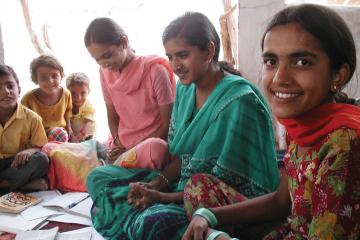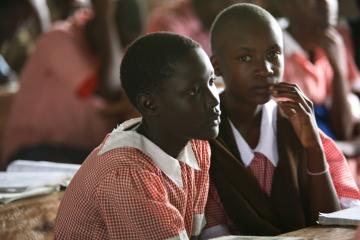Evidence-informed approaches to reducing pregnancy among adolescents

In 2018, 21 million girls and young women aged 15 to 19 in developing regions are expected to become pregnant. The decisions that lead to pregnancy in adolescence are complex and do not occur in a vacuum: the broader sociocultural context, including social norms, individual beliefs and preferences, intrahousehold dynamics, and economic factors, such as income, shape an adolescent female’s decisions around marriage, sexual activity, and use of contraception.
The diversity of these factors complicates designing effective policies and programs that support adolescents in delaying pregnancy. What kind of information can shift beliefs and sexual behaviors? Can we empower adolescents to have more decision-making power in their lives? Can providing cash or incentives to adolescents enable them to make choices that may otherwise be out of reach?
J-PAL’s new policy Bulletin on reducing adolescent pregnancy in developing countries features ten randomized evaluations that tested a range of programs: in-school sexual information sessions, job information, skills training, empowerment programs, scholarships and school subsidies, and conditional incentives. These programs were diverse, but what successful interventions had in common was their focus on changing adolescent girls’ calculus of costs and benefits of unprotected sexual activity and childbirth.
The Bulletin highlights the following key results:
- Adolescents’ sexual behavior can be responsive to information about sexual and reproductive health. Information that addresses trade-offs related to decisions about sexual activity can be more effective in changing behaviors than simple exhortations to remain abstinent.
- Programs that enhance life aspirations can lead girls and young women to delay childbearing. Adolescents who hold optimistic beliefs about their future opportunities may be more likely to avoid risky sexual behaviors and engage in productive economic activities.
- Subsidizing school can support girls to continue their education, which in turn encourages delays in childbirth. Schooling may help adolescents better process decisions around childbirth and may shape fertility preferences. More education can also increase adolescents’ future earnings, leading them to delay childbirth in order to earn higher wages.
- Incentives can also allow adolescents to delay relationships that lead to childbearing. Financial incentives may reduce income-related motivations to enter into transactional relationships or to marry at a young age.
- In contexts in which parents and others influence adolescent females’ childbearing outcomes, programs should also involve these decision-makers.
We recently sat down with Pascaline Dupas (Stanford University), who co-chairs J-PAL’s Health sector and works extensively on the issue of pregnancy in adolescence, to discuss the key takeaways from the bulletin and strategies for policymakers who aim to support adolescents in delaying pregnancy.
Pascaline explained how the structure of many dowry systems leads to early marriage and pregnancy, and why subsidizing education and increasing access to economic opportunities can encourage adolescents to delay pregnancy.
To learn more about how programs changed the calculus of costs and benefits of pregnancy, read the Bulletin.
Related Content

The Impact of Risk Information on Adolescent Sexual Behavior and Knowledge in Cameroon

Improving Labor Market Opportunities to Increase Women's Employment and Education in India

